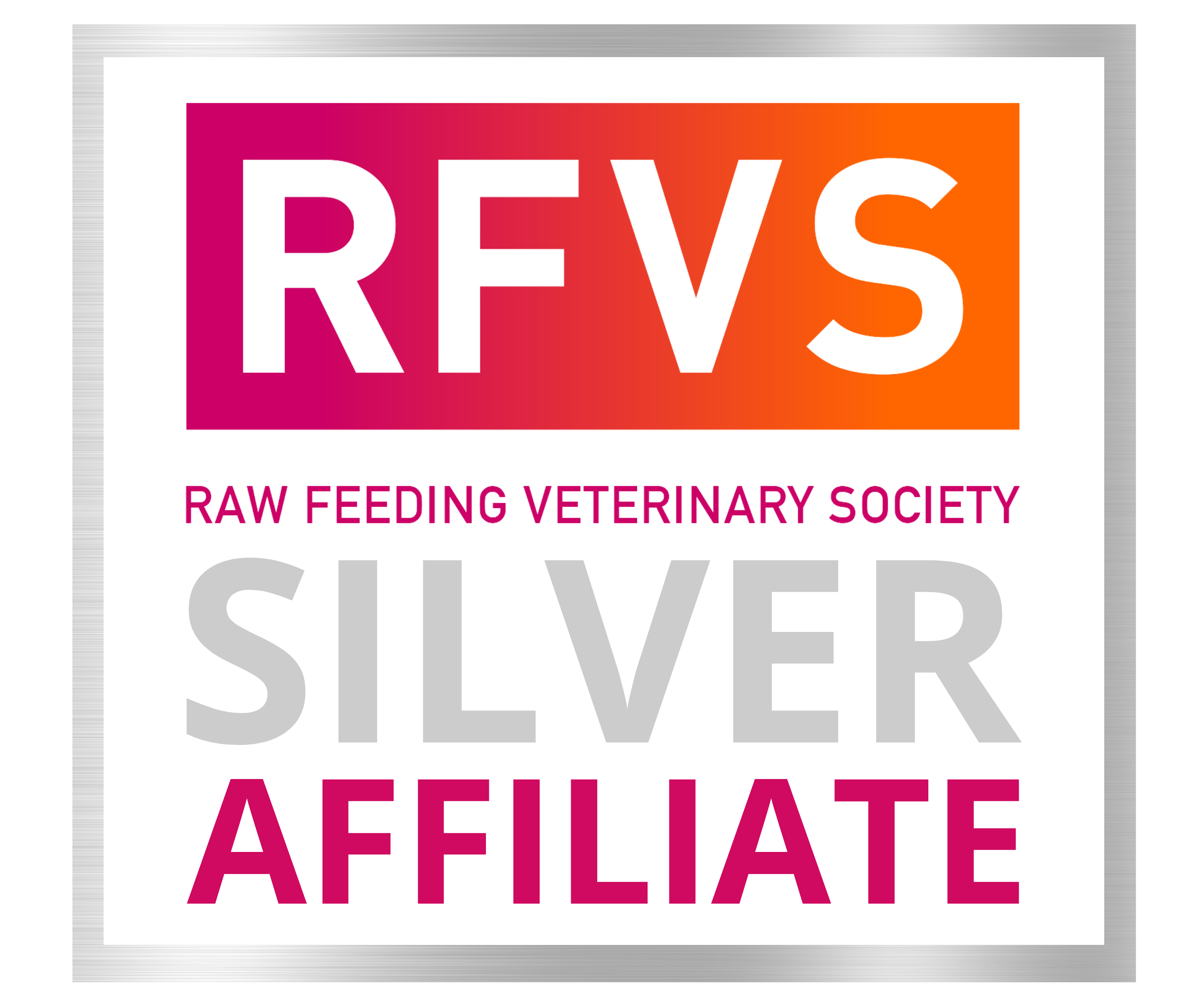How to Safely Feed Raw Meaty Bones to Your Dog (or Cat)
Why Feed Raw Meaty Bones? Backed by Nature—and Science
Raw meaty bones are a vital part of a species-appropriate diet for both dogs and cats. In the wild, carnivores naturally consume whole prey, including bones, which provide calcium, phosphorus, and other vital nutrients. These are crucial for skeletal development, nerve function, and overall metabolic balance (Case et al., 2010).
Bones also support natural behaviours—ripping, tearing, and chewing—which aren’t just enriching, but contribute to oral and digestive health. According to studies published in Journal of Animal Physiology and Animal Nutrition, chewing raw bones significantly reduces tartar and plaque buildup, reducing the risk of periodontal disease (Lonsdale, 2001; Buckley et al., 2011).
Key Considerations Before Feeding Bones
1. Choose the Right Type and Size of Bone
To get the full benefit of raw meaty bones, your dog or cat needs to rip, tear, and chew. Choose meaty bones with soft tissue and avoid bones that are too small or too dense.
-
✅ Good Options: Chicken necks, turkey necks, duck frames, lamb brisket, rabbit shoulders, wallaby pieces.
-
❌ Avoid: Cooked bones (splinter hazard), weight-bearing bones of large animals (e.g. cow femurs), or bones too small to chew properly.
Rule of thumb:
-
The bone should be larger than your pet’s mouth, so they chew instead of gulp.
-
Avoid bones that are too hard, which can lead to tooth fractures—particularly in aggressive chewers.
🐾 Pro Tip: For brachycephalic breeds (like Pugs, French Bulldogs), chewing mechanics are different. Talk to our team for breed-specific recommendations.
2. Never Feed Cooked Bones
Cooked bones can splinter easily and are extremely dangerous, risking internal injury, choking, or digestive tract perforation. Always feed raw bones to ensure safety and digestibility.
3. Balance Bones with the Rest of the Diet
Bones alone are not nutritionally complete. To provide a biologically appropriate raw diet, balance bones with:
-
Muscle meat
-
Organs
-
Green tripe (a natural prebiotic and probiotic)
According to raw feeding best practices and supported by veterinary nutritionists (Billinghurst, 1993), this balance mirrors the composition of a whole prey animal and provides the full spectrum of essential nutrients.
4. Green Tripe Aids Bone Digestion
Feeding green tripe alongside bones supports digestion by:
-
Providing digestive enzymes
-
Supplying beneficial bacteria for gut health
-
Stimulating stomach acid to help break down bone
We recommend feeding tripe at 25–33% of the bone’s weight in the same meal to ease digestion—especially for pets new to raw bones.
5. Not Every Pet Should Eat Bones
Some pets may not be suitable candidates for whole raw bones, including:
-
Senior pets with weakened digestion or dental disease
-
Caution must be taken with brachycephalic breeds such as pugs or french bulldogs
-
Pregnant or lactating animals
-
Pets recovering from dental surgery
If your pet fits any of these categories, consult a pet nutrition expert before introducing bones. In some cases, ground bone or bone broth may be safer alternatives.
Safety Tips for Feeding Raw Bones
-
Always supervise your pet while they chew to prevent choking or gulping.
-
Feed pets separately to reduce competition and avoid “bone gulping.”
-
Remove the bone if your pet tries to swallow it whole or becomes overly excited.
-
Trade, don’t take: If you need to remove a bone mid-chew, offer a high-value treat in exchange to avoid resource guarding or scoffing.
Benefits of Raw Meaty Bones
1. Dental Health
Chewing raw bones mechanically scrapes plaque and tartar from the teeth. Studies have shown a dramatic reduction in dental calculus in dogs fed raw bones versus kibble-fed dogs (Lonsdale, 2001).
2. Nutritional Support
Bones provide calcium and phosphorus in their natural ratio, critical for healthy bones, teeth, nerve signaling, and muscle function. They also contain marrow and connective tissue, which provide fat-soluble vitamins and joint-supporting compounds like glucosamine.
3. Mental Enrichment & Behavior
Chewing satisfies your pet’s natural instincts. It helps reduce stress, combat boredom, and even curbs destructive behaviors in dogs. It’s nature’s version of a puzzle toy—with nutritional perks.
For Cats Too!
While dogs are more widely known to enjoy bones, cats can benefit from small, appropriate meaty bones too—like chicken necks or rabbit ribs. These support dental health and provide enrichment, especially for raw-fed cats who don’t get these nutrients from kibble or wet food.
Note: Always size the bone appropriately to your cat’s jaw and feeding habits, and monitor closely during feeding.
Final Thoughts: A Natural, Balanced Approach
At Raw Essentials, we love raw meaty bones—not just because pets love them, but because they’re incredibly beneficial when fed safely and correctly. They:
-
Improve oral health
-
Provide essential nutrients
-
Support gut and immune health
-
Fulfill natural behavioral needs
If you're new to raw feeding, or unsure which bones are right for your pet’s breed, size, or age, talk to one of our trained nutrition experts. We’re here to guide you through every step—online or in-store.
Because a pet with a raw bone in their diet is more than satisfied—they’re thriving.
References
-
Lonsdale, T. (2001). Raw Meaty Bones: Promote Health. Rivetco.
-
Case, L. P., Daristotle, L., Hayek, M. G., & Raasch, M. F. (2010). Canine and Feline Nutrition (3rd ed.). Mosby Elsevier.
-
Buckley, C., Colyer, A., & Stevenson, R. (2011). The effects of feeding a raw food diet on dental health parameters in cats. Journal of Veterinary Dentistry, 28(4), 182–188.
-
Billinghurst, I. (1993). Give Your Dog a Bone.
-
Sandri, M., et al. (2017). Raw meat-based diets for dogs: Survey of owners' motivations, attitudes, and practices. BMC Veterinary Research, 13(1), 1–11.
